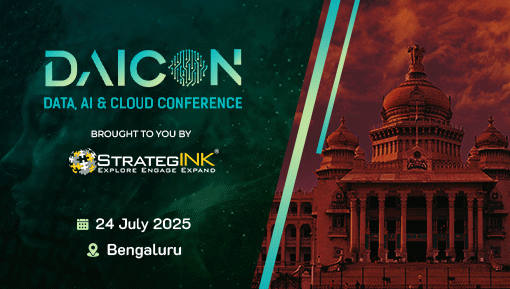

Former Group Executive President and Group CIO
Aditya Birla Group
Enterprises need to have an integrated approach for business technology, and eliminate the silos created by IT, digital and analytics teams.
Business Technology: Decoding the Context It is no exaggeration to say that today, business technology risk is business risk. Every part of business depends on technology not only for day-to-day operations but also for growing the business, in the context of increasingly competitive markets and demanding stakeholder expectations and compliance requirements. Indeed, every business survey by any of the top tier management consultants points to the leaders who continue to embrace and drive the game to next level leveraging business technology (data and analytics, information and communication technology and digital) versus the laggards who are at the other end of the spectrum, still struggling with getting basics right viz. of hygiene and keeping the lights on. A study had identified 47 unique technical skills for Business IT Team – these were generic skills not related to any OEM – from IT Infrastructure to IT Applications to IT Security. This clearly illustrates that no matter how much technology seems to be user friendly and seamless at front end, the fact is that there is lot of complexity that needs to be managed at the back end. The complexity comes from multiple moving parts from different manufacturers and at a pace that makes obsolescence a permanent issue. Today Information and Communication Technology is the foundation for business technology to deliver business value. Every business is re-imagining and re-inventing itself using innovations with data and analytics and digital technologies. This requires not only a robust understanding of technology across all the three domains but also a knack for seeking out opportunities for customer value, new markets, cost and process re-engineering et.al. Further the entrepreneurial and organizational skills to build internal and external partnerships, to influence and to persevere through often un-charted waters.
The Leadership Crisis

The discussion above clearly underlines the need for an integrated approach for business technology, eliminating the silos organizations create for IT, digital and analytics. Even within IT there are silos for infrastructure, applications or security. This isbecause of the large number of technical skills and the depth that one can go into each, coupled with the new enhancements that keep coming up. It is a never-ending maze that technical professionals get too busy to think of life outside this world. So, while it is possible that a professional in an IT company can afford to spend more time and build deep technical expertise in one or two areas, for an end user IT company, this ends up with the professional missing out on other skills that are essential for his/her career growth.
This issue extends to organizations and is not limited to individual. Firstly, there are limits to career growth of people in narrow silos as they lack breadth of management, the fact is in an end user IT company it is unlikely that you can be VP for Cloud. This leads to frustration and comparisons with peers in other functions like Finance. As far as the organization is concerned, they will treat you as a Specialist and not see you as a business leader unless you play a tangible / visible part in business value creation or delivery.
Secondly, it is a great loss for the organization to not have a pool of dedicated, knowledgeable resources (esp. process knowledge, change management skills, problem solving skills) not available for business improvement or growth initiatives. The only option is to look for external consultants who seem to have both technology and business skills. However, this is a sub-optimal option as the skills are not retained in-house and the improvements may not be sustainable.
The same is true for data and analytics and for digital technology professionals. Given the day-to-day job responsibilities and the need to get into technical depth and keep abreast of new developments in a fast-changing world can be a challenge. To additionally expect an understanding of other domains is tough ask. While organizations can play an enabling part, however, every professional needs to take self-initiative. Self-learning using online courses and participation in cross domain projects can be one way.
The Chief Information Officer / Head of IT or Chief Digital or Chief of Analytics are in real risk of being considered Chief Dentists – that they are Technical Specialists or Advisors and not really part of Business Leadership. The overall effectiveness and impact of the business technology function has a risk of sub optimal delivery. This can set in motion a vicious cycle of lack of credibility of function leading to cut back on investments in technology which then leads to further drop in effectiveness and business value. It is critical that business technology leaders are seen as thought and action leaders, with evidence of contribution to business outcomes using innovations and technology.
So, the crisis in leadership can lead to crisis in adoption and business impact. The surveys done by management consultants clearly point to small number of organizations who are driving full value from digital and analytics, a large majority have not yet done so. Therefore, the time to act is now
What You Can Do?
First, each one must realize we have a problem, rather than “being an ostrich and burying our head in the sand” (or silo) of technology and hoping that the problem will go away or that it is someone else’s problem. We must have a self-learning program, identify which areas, why and what skills are required to what level of expertise. The domains are deep and wide, so it depends on our hunger to learn and desire to contribute. Satisfaction with your current role or expertise is dangerous, as the situation can change very quickly, so remain hungry to learn, only change is constant.
In addition to the cross technology (IT, Analytics, Digital) domains and areas within each (Cloud, IOT, Data
Science, GDPR etc.), it is important to have an in depth understanding of your business context – why, what, how, competition, customers, financials etc. It is vital to look at new impact opportunities, including, cost, customer experience, product development, supply chain, waste reduction, quality, energy, yields etc.
A process of rotating talent from business technology team to other business functions and vice versa is great way of integrating and maintaining business connect. The management trainee pool recruited from top institutes for strategy, marketing, operations etc. must include technology, often organizations fast track these for leadership roles. They should be considered for leadership roles in technology and a succession plan needs to be built for internal talent e.g., CIO to move as VP Operations and maybe CEO. Similarly, it is important to build employee value proposition for technology professionals as future business leaders and not only as CIOs and an employer of choice / top talent.
Finally, as a team, it is vital to discuss what is the brand promise of the business technology team? What does it mean for you? What can you do to improve it? From the vicious cycle move it to a virtuous cycle, high business impact leading to credibility, leading to more adoption and investments which in turn leads to bigger responsibilities and impact. Think of what this will mean for you, your team and for your business.
About the author
Atul has over 40 years of experience in various Roles in India and overseas. He has worked in Siemens, Hindustan Unilever and Aditya Birla Group. Atul retired as Group Executive President and Group CIO from Aditya Birla Group. He is an alumnus of Jamnalal Bajaj and St. Xavier’s College Mumbai. He is based in Mumbai.




